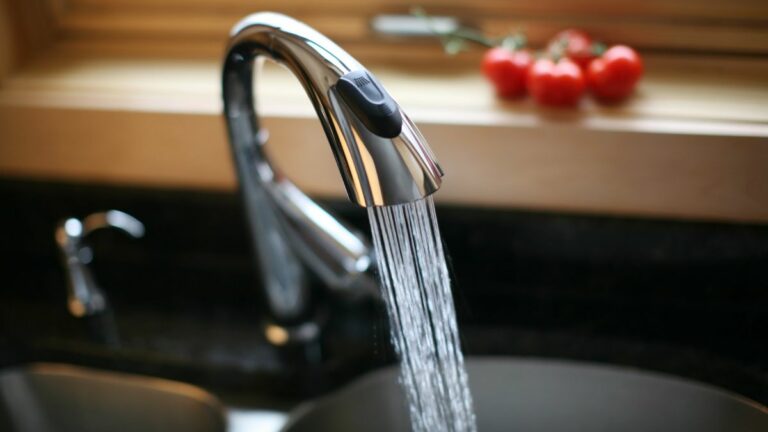How To Paint Kitchen Cabinets
Painting your kitchen cabinets can transform your entire space without the hefty price tag of a full remodel. But to achieve a professional-looking finish, you need a clear plan, the right tools, and some careful prep work. This guide will walk you through each step, from prepping your workspace and removing cabinet doors to sanding, priming, painting, and maintaining your newly refreshed cabinets. Ready to bring new life to your kitchen? Let’s immerse.
Gathering Your Supplies And Preparing Your Workspace
Before you start, gather all necessary supplies to keep your workflow smooth. You’ll need:
- Screwdrivers (Phillips and flat-head)
- Painter’s tape
- Drop cloths or plastic sheeting
- Cleaning supplies (degreaser or trisodium phosphate)
- Sandpaper (120, 220 grit)
- Primer and paint suitable for cabinets
- Paintbrushes and foam rollers
- Paint trays and stir sticks
Next, prepare your workspace by clearing countertops and covering floors with drop cloths to protect surfaces from dust and paint. Choose a well-ventilated area to work in, ideally with natural light to spot imperfections easily. Removing unnecessary clutter ensures you won’t accidentally knock over supplies or dust particles while you work.
Removing Cabinet Doors And Hardware
To get a smooth, even finish, you’ll want to remove all cabinet doors, drawers, and hardware like handles and hinges. Use your screwdriver to carefully unscrew each door and label it to remember its exact place, numbering doors and matching them with their frames prevents confusion later.
Keep all screws and hardware in small labeled bags to avoid loss. If any hardware is damaged or outdated, this is a great time to consider replacements to refresh the overall look.
Cleaning And Repairing Cabinet Surfaces
Your cabinets have likely accumulated grime, grease, and fingerprints over time, which can interfere with paint adhesion. Clean all surfaces thoroughly using a degreaser or trisodium phosphate solution. Focus especially on areas near the stove and handles where oils tend to build up.
After cleaning, inspect your cabinets for dents, scratches, or holes. Use wood filler to repair any imperfections, smoothing the surface with a putty knife. Allow the filler to dry completely before moving on, as this sets a solid foundation for a flawless paint job.
Sanding Cabinets For A Smooth Finish
Sanding is a crucial step that ensures paint adheres well and the finish looks smooth and professional. Start with medium-grit sandpaper (around 120 grit) to remove the existing finish and smooth out any repaired spots. Then, go over the surface with finer grit (220 grit) to create an extra smooth base.
Make sure to sand in the direction of the wood grain to avoid scratches. After sanding, wipe down all surfaces with a tack cloth or damp rag to remove dust. This prevents gritty paint textures and helps paint layers adhere properly.
Applying Primer To Kitchen Cabinets
Primer is essential to seal raw wood and provide a uniform base for your paint, especially if you’re painting over dark finishes or stained wood. Use a high-quality latex or oil-based primer designed for cabinets.
Apply primer in thin, even coats using a brush for crevices and a foam roller for flat panels. Allow the primer to dry according to the manufacturer’s instructions. If any areas appear uneven or you notice brush strokes, lightly sand with fine-grit sandpaper and wipe clean before proceeding.
Choosing And Applying The Paint
For kitchen cabinets, durability is key. Choose a high-quality, semi-gloss or satin finish paint formulated for cabinets or trim, these finishes resist moisture, stains, and wear.
Apply your paint in thin, even coats, using a brush to reach corners and details and a foam roller for smooth surfaces. Avoid thick coats to prevent drips and uneven drying. Typically, two to three coats will give you full, solid coverage. Allow each coat to dry completely before applying the next, lightly sanding between coats if needed for an ultra-smooth finish.
Finishing Touches And Reassembling Cabinets
Once your paint has fully dried and cured (which could take several days), carefully reinstall the hardware, doors, and drawers. Double-check that hinges and handles are tightened securely, and that doors align properly and swing smoothly.
This reassembly stage requires patience, rushing can cause chips or smudges on your fresh paint. Consider installing new hardware for a fresh look or upgrading to soft-close hinges to enhance cabinet function and feel.
Tips For Maintaining Painted Kitchen Cabinets
Maintain your painted cabinets by wiping them regularly with a soft, damp cloth and mild detergent. Avoid abrasive cleaners and harsh chemicals that can damage the finish.
Address spills and stains promptly to prevent them from setting. Over time, you may notice small chips, keep a small amount of your paint handy for quick touch-ups.
With proper care, your beautifully painted cabinets can stay vibrant and fresh for years, giving your kitchen a lasting facelift.
Conclusion
Painting your kitchen cabinets is a rewarding DIY project that requires thoughtful preparation and careful execution. By gathering the right tools, taking your time to prep surfaces, and applying paint meticulously, you can achieve a professional-quality transformation that breathes new life into your kitchen.
Remember, patience and attention to detail make all the difference. With these expert steps, your cabinets will not only look stunning but also hold up beautifully in your busy kitchen for years to come.

